
Almond Dacquoise Cake (with Peaches)
This Peach Almond Dacquoise Cake makes the perfect gluten free afternoon tea dessert!
Continue Reading
This Peach Almond Dacquoise Cake makes the perfect gluten free afternoon tea dessert!
Continue Reading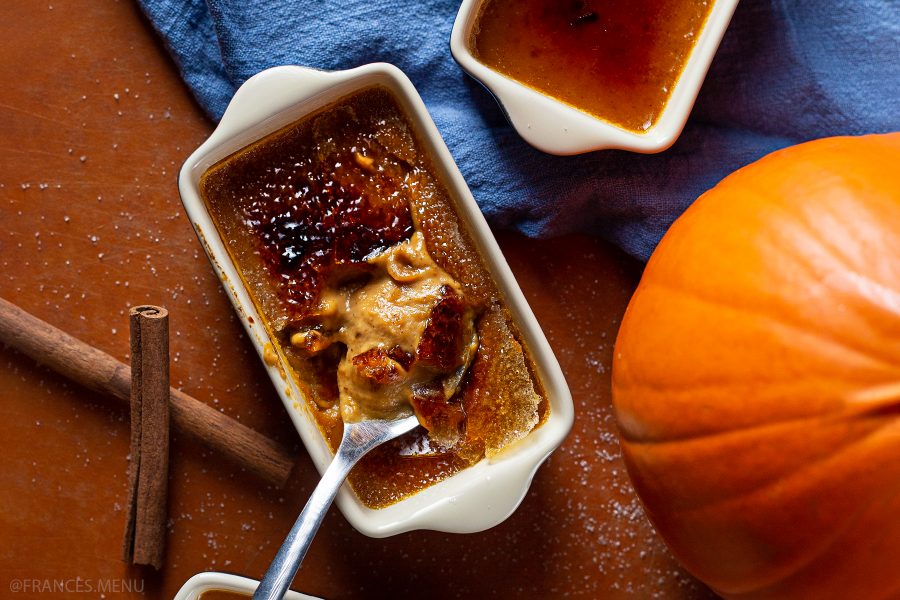
Looking for that perfect 🦃Thanksgiving party dessert that is both impressive and easy to make? This pumpkin creme brulee recipe will transform your Fall parties forever!
Continue Reading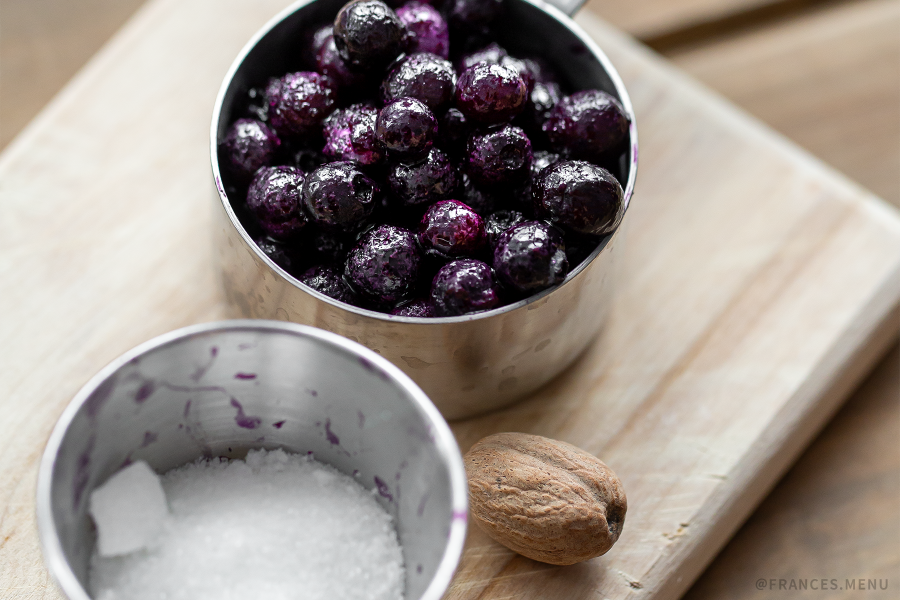
This easy recipe creates an impressive Earl Grey Panna Cotta complimented by a delicious Blueberry Compote! Make ahead to impress your date or for a house party!
Continue Reading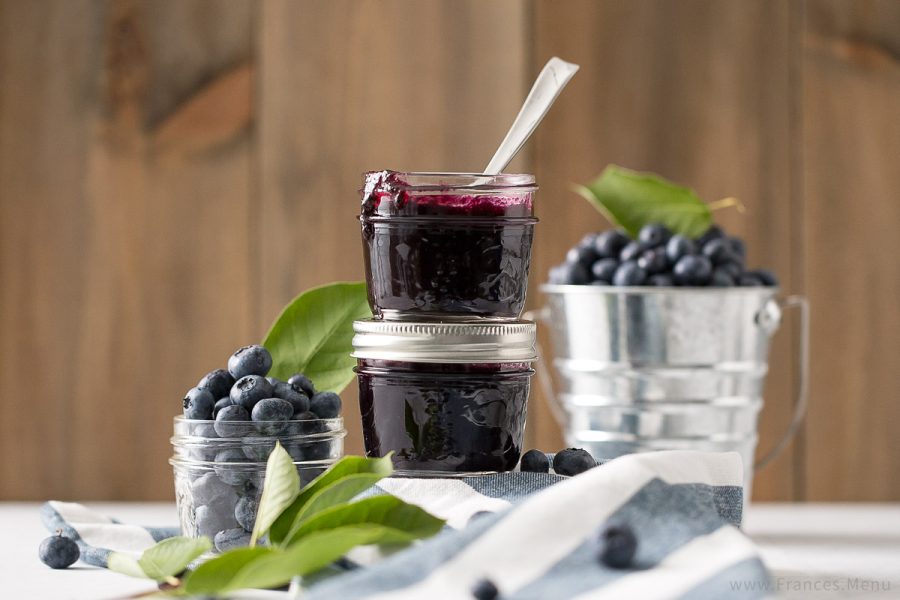
Ten years ago, if you told me that I would be making my own delicious Blueberry Vanilla Jam for breakfast, I would have thought you were crazy.
Continue ReadingNo-Bake Tofu Cheesecake? You’re probably thinking ‘Blegh, No Thanks’. But I kid you not, this tofu cheesecake is one of the most amazing cheesecakes I’ve ever tasted. It is easy to make (almost impossible to screw up), doesn’t require baking and tastes as if a cheesecake was made into a light and airy custard with hints of sweetness and tofu. If you enjoy subtly sweet desserts, then you will love this No-Bake Tofu Cheesecake!
Happy New Year! It’s been a while, my apologies, I was vacationing for a month and then the holiday season hit so it’s been busy. I’ve been doing a lot of gluttonous gorging, partying, eating some more and almost ZERO exercise. As a result, I feel sluggish and foggy causing me to crave something light on my stomach, healthy for the body and easy to make (because I’m also feeling quite lazy). The probability of other people also feeling the same after the holidays is 5 in every 3 couch potatoes, so I’ll share with you what I’ve been eating lately to put the zing back in my step. I present to you, Zaru Soba, also known as Chilled Buckwheat Noodles.
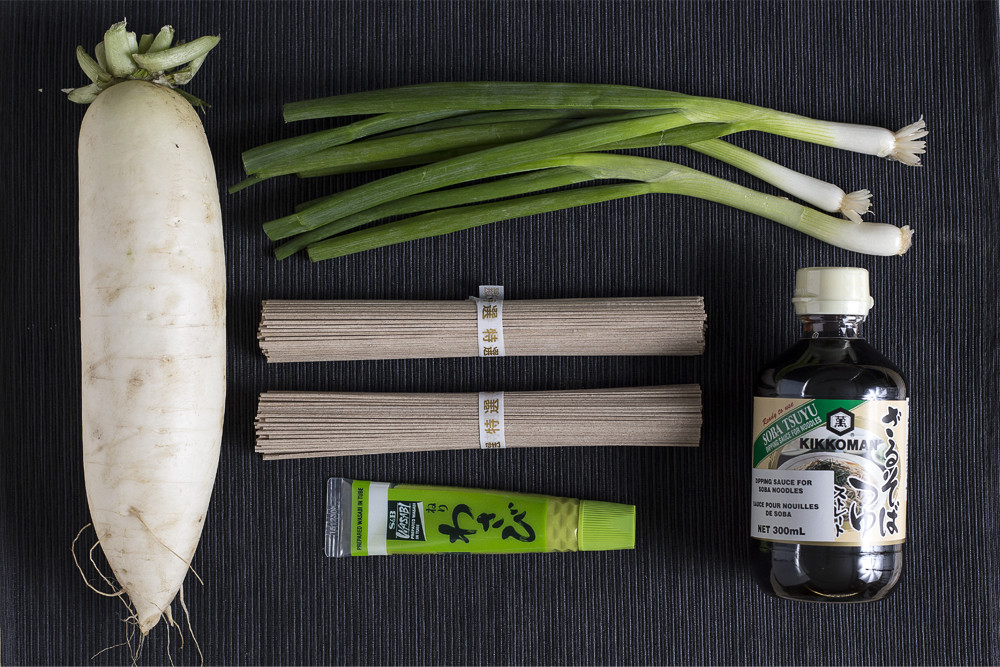
Soba, the Japanese term for buckwheat noodles, is gluten free (if you purchase soba with 100% buckwheat) and full of bio-compounds that the body needs, such as all eight essential amino acids, choline, thiamine and riboflavin (source). It also contains antioxidants which helps the body fight free radicals and prevent/delay some types of cell damage such as cancer. Soba regulates blood pressure and liver function which plays an important part in metabolism. By acting as a neutralizing agent it also supports the liver, which is great after a night of drinking, not to mention, the high fibre content promotes bowel movement and helps eliminate cholesterol (source). In conclusion, thumbs up for Soba for being good to your body.
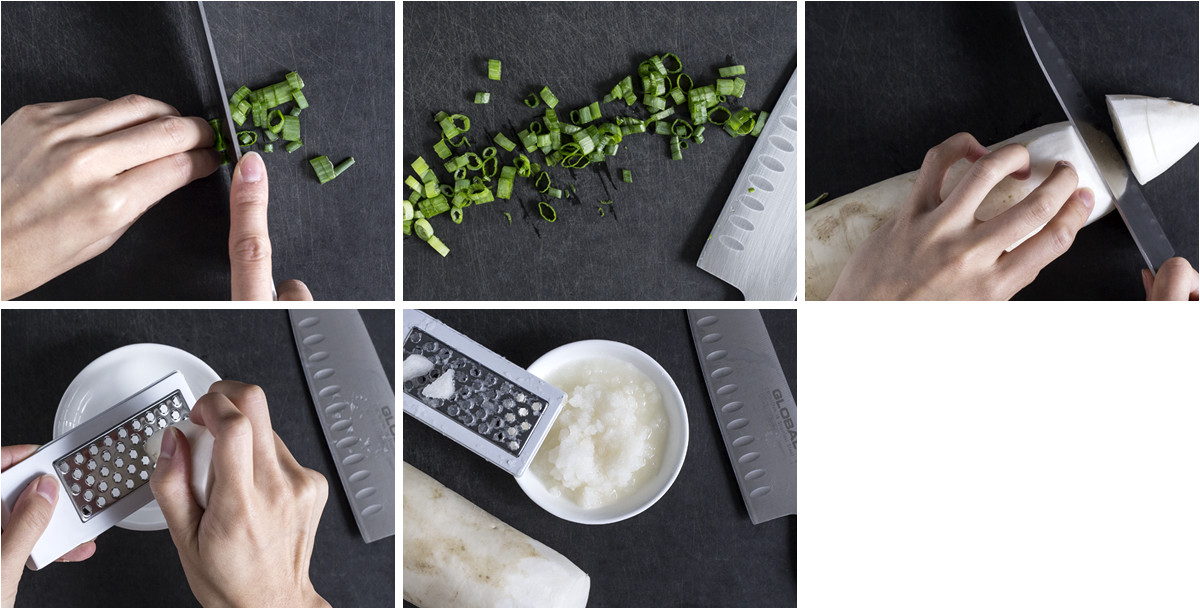
Real talk though—all of this health info I found for the sake of writing this blog article; the main reason I eat Zaru Soba is because it tastes good and it’s so easy to make. If I cook enough soba for 2 or 3 meals I can store it in an airtight container in the fridge and eat it for lunch over the next two days.
There are many variations of Zaru Soba and the great thing is, you can go as simple as you want (chilled soba + dipping sauce) or as fancy as you want. Soba can also be eaten hot! For this recipe, I mix the grated daikon, wasabi, green onion together before dipping the noodles in. Part of the fun is that you can create a ratio of this mixture to your own desire, there is no right or wrong. I hope you enjoy chilled Zaru Soba as much as I do!
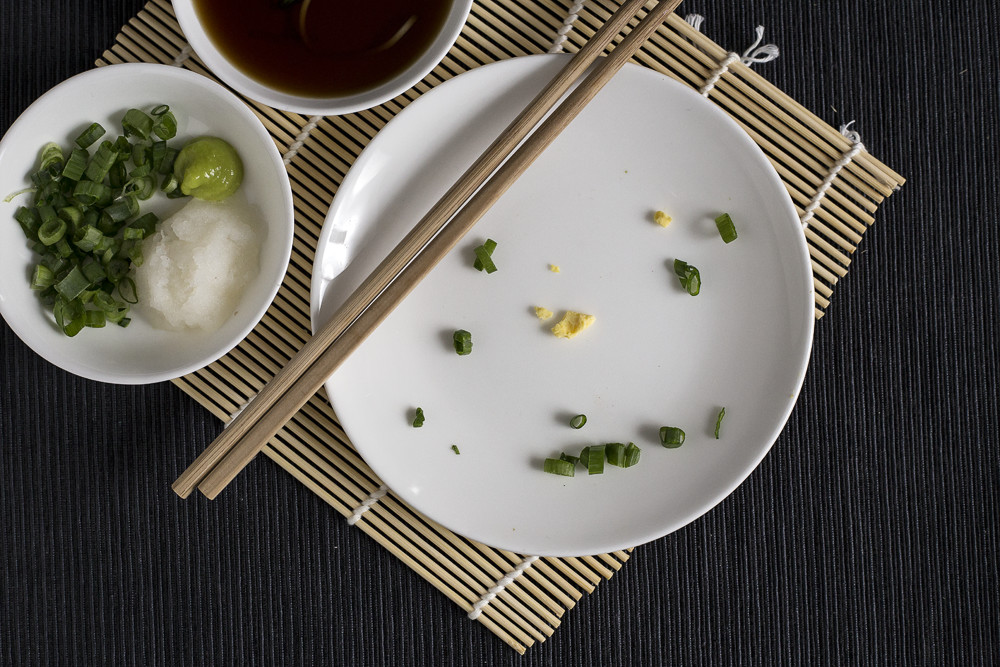
If you try this recipe, don’t forget to share by taking a photo and posting on instagram with the hashtag #francesmenu!
Prepare the soba by following the cooking instructions at the back of the noodle package. After it is done cooking, add the soba to the bowl of cold water and swirl around to wash off the extra starch and stop any further cooking. Transfer the soba to a colander and allow it to drain in the fridge for 5 minutes (with a drip pan of some sort underneath). Noodles can also be made the night before, drained and stored in an airtight container.
In the meanwhile, grate the daikon radish, dice the green onion and pour the soba tsyuyu into a dipping bowl. To mix the dipping sauce, add some scallion, grated daikon radish, tiny bit of wasabi to the soba sauce. Stir and taste, add more of what you want.
Serve the soba with dried seaweed sprinkled on top and the chilled egg sliced in half on the side. To eat, dip the soba into the sauce as you eat. Alternatively, you can mix your sauce into the soba noodles.
 Do you ever wonder how many cups of coffee are consumed in this world daily? The answer is over 2.25 billion cups of coffee.
Do you ever wonder how many cups of coffee are consumed in this world daily? The answer is over 2.25 billion cups of coffee.
Those who know me will tell you that although I enjoy my occasional cappuccinos, I react adversely to caffeine because even the tiniest intake will make me jittery and unable to concentrate. They will also tell you that I LOVE my whipped cream. A love that overwhelms my intolerance of caffeine.
Which brings me to my recipe of today, the Einspänner Coffee, one of the many coffees that you will find at a Viennese coffee house. Pronounced ‘Ein•spän•ner’ or how I think of it ‘I-N-SHPINE-NUH’, it means Single-Horse-Carriage, which were the taxis of the past. This Viennese Coffee is made with two shots of espresso and lots and lots of whipped cream.
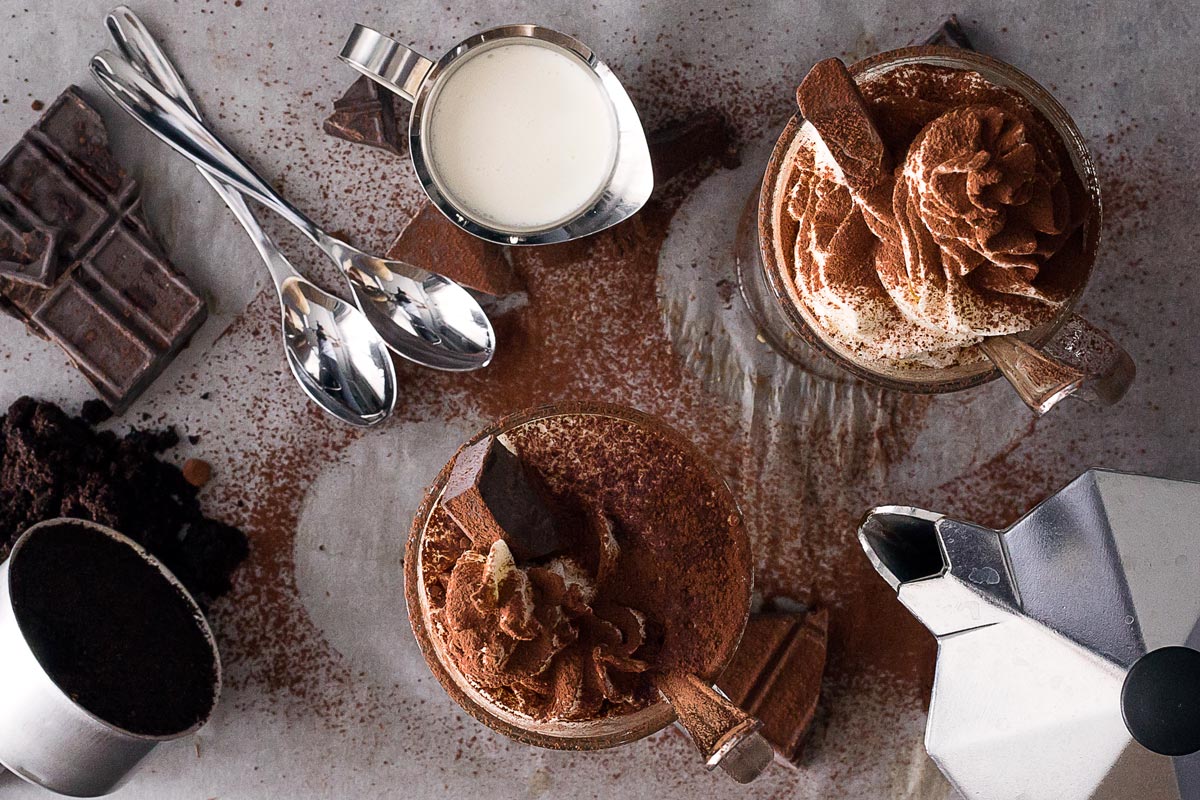
“The Einspänner is the traditional drink of the Viennese coach drivers as the coffee could be kept warm (and the driver’s hands as well) in the glass with the thick cream topping serving as insulation for the hot beverage below, or quickly consumed, if a fare arrives, by drinking the hot coffee through the cold cream on the top.” – Vienna Concerts
The Einspanner Coffee is different from the Kapuziner coffee which is espresso topped with only a little bit of full cream/whipped cream. The Kapuziner, which originated from Viennese coffee houses in the 1700s, is the forefather of the well known cappuccino of today.
When you’re having your coffee today, try making it a Viennese Einspanner Coffee. And while you’re sipping that Einspanner, imagine you’re sitting on a single-horse-carriage traversing the historic cobblestone streets of Vienna, Austria.
Do you need recipes developed and filmed? Do you have some food/products you want me to photograph? I’d love to hear from you! DM me through IG @frances.menu or email at franceslamdesigns @gmail.com!

